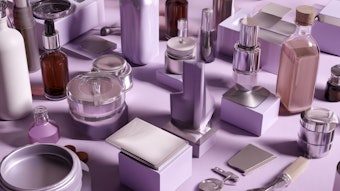Growing by almost 500% over the last 20 years, nonsurgical cosmetic procedures are mirroring consumers’ preferences for minimally invasive treatments. And in line with demand for these nonsurgical procedures, 2012 sales of professional aesthetic products saw an increase of 7.5%, according to the recently published Professional Aesthetics: U.S. Market Analysis and Opportunities study by Kline & Company.
Key factors driving growth include greater awareness of in-office treatments and their benefits, less down time and discomfort, with a whole body of treatments and increased distribution similarly contributing to the market’s overall growth.
“Enhancing Kline’s long respected skin care market research portfolio, we felt this was an important market to thoroughly assay as it is the missing link within the professional skin care equation. There are essentially three levels of how skin care concerns can be addressed on a professional basis—with topical products purchased at a spa or from a doctor, using an at-home device, or having an in-office treatment performed using a laser, IPL or injectible. This report completes the loop,” explains Karen Doskow, industry manager at Kline’s consumer products practice.
The considerably consolidated injectibles market continues to drive overall market growth, with new products such as Belotero Balance from Merz entering the market in 2013, while body contouring and cellulite reduction is the most dynamic addressed skin concern. Injectibles account for just over half of total market sales while body treatment products are growing at close to 20% in 2013 due in part to good alternatives now offered to liposuction. Additionally, the first FDA-approved laser system for cellulite treatments, Cellulaze by Cynosure, was introduced recently.
Several key marketers are offering devices with upgradeable features to accommodate a larger number of skin concerns. For example, Cutera’s Xeo Platform offers upgradeable capabilities that include specialized attachments enabling skin fitness, hair removal and vascular therapies using the same device. Some aesthetic devices are claimed to address as many as 22 skin care concerns. Professional aesthetic devices providing multiple benefits is an increasing trend particularly within the energy and mechanical devices category. This category is also showing the fastest growth due to its technological advances, and consequently more effective and permanent results.
Aesthetic devices manufacturers are keenly interested in expanding their direct reach into the consumer market by launching devices for at-home use. To this end, several professional aesthetic products manufacturers have partnered with consumer goods marketers, as exemplified by Unilever’s partnership with Cynsoure to introduce at-home beauty devices for skin rejuvenation treatments, and the Syneron/Procter & Gamble partnership to utilize Syneron’s proprietary ELOS technology for at-home devices applications. Syneronalso has been successful in building its own at-home device franchise, Tanda. This year, the company has expanded by creating an at-home device market for teeth whitening with the launch of Tanda Pearl.
What’s next? New areas for at-home products? Patches that replace injectibles? Will micro-needling become the new low-cost alternative to laser and IPL procedures? Kline is already finding that micro-needling is the fastest growing segment, with sales increasing by 87.5%, and more information on the topic is available at Kline’s upcoming webinar on the professional aesthetics market, to be held Thursday, October 10 at 2 pm U.S. EDT.










